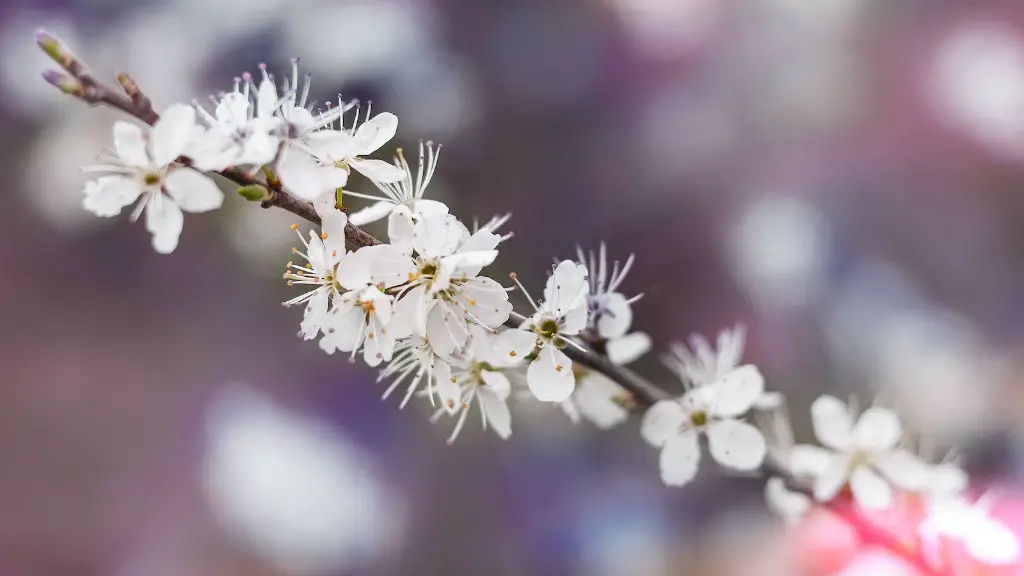Choosing Your Tools
Before you begin your painting project, it is important to have all the necessary supplies on hand. Acrylic paintings can be done on canvas, paper or wood. Different types of brushes and acrylic paints should be selected for the project. The main supplies are a large tube of white acrylic paint; a variety of color acrylic paints; a flat brush for the background layer; a round brush for detail work; and a paint palette to mix colors. Selecting the best quality supplies always helps to produce a great painting.
Preparing the Canvas
Once you have all the supplies ready, prepare your canvas by cleaning it with a damp cloth and allowing it to dry. It is important to make sure the canvas is clean and free of dust and dirt before starting the painting. Next, sketch the design of your cherry blossom tree using a pencil to get an idea of the layout.
Creating a Base Layer
You can now start creating your painting. Begin by using the flat brush to paint the background layer using medium to thick layers of white acrylic paint. The background layer helps to give the painting a solid foundation for the other colors. Make sure the base layer has good coverage on the canvas and allow it to dry before proceeding to the next step.
Adding Color and Texture to the Tree
To begin adding color to the tree, start by mixing your desired colors in the paint palette. You can use different colors according to your preference. Begin by painting the trunk and branches of the cherry blossom tree with a darker color and add lighter colors for the leaves and blossom.
For the blossoms, use the round brush with short, sharp strokes in several shades of pink, white and yellow. This will help to create a realistic and textured look for the painting. To give the painting a more realistic feel, mix together different colors and apply layers of lighter colors to the darker colors.
Adding a Background
Once you are happy with your painting, you can add a background using lighter colors such as blues, grays and purples. Adding a background helps to emphasize the colors of the cherry blossom tree, and it can be as simple or as detailed as you like.
Finishing Touches
Once all the colors are dry, begin adding the finishing touches to your painting. You can use heavier layers of paint for details, highlights and shadows to give the painting greater depth. You can also use white paint to add light and darker colors for shadows.
Sealing the Painting
When you are happy with the painting, it is time to seal it. Sealing the painting is an important step to ensure the colors are protected from dust and scratches. Use a varnish or spray sealer and follow the manufacturer’s instructions for the best results.
Hanging and Care Tips
When the painting is completely dry and sealed, hang it up and admire your work. To keep your painting looking its best, make sure to keep it away from direct sunlight, water and dust. Clean it occasionally with a soft, damp cloth.
Other Painting Tips and Techniques
Always make sure to use the best quality brushes and paints for your projects to get the best results. Experiment with different colors and techniques to get a look that you love and have fun with your painting.
Communicating Your Vision
When telling the story of your painting, be clear and concise. Describe the techniques you used, the colors and the feelings you want to evoke. Use vivid language and sensory phrases to help the viewer connect with your painting.
Techniques and Textures
It is important to experiment and find the right textural techniques to express your vision. Layer colors, use a mix of straight strokes, swirls and dots, and be creative with how your create highlights and shadows. To give your painting the look of movement, use blurred brushstrokes and smudges.
Depth, Atmosphere and Mood
Paintings should evoke an emotion or a feeling and be able to draw the viewer into its world. Make sure your painting has layers and a realistic depth to it. Add vibrant colors and contrasting shaders to create the atmosphere and the mood of the painting. Experiment with different palettes and find which one creates the desired effect.
Creating a Focal Point
Focus on one key element that will make your painting stand out. Whether it is the cherry blossom tree, a striking sky, or a soft horizon, find the element that will be the most visually appealing and draw the attention of the viewer.
